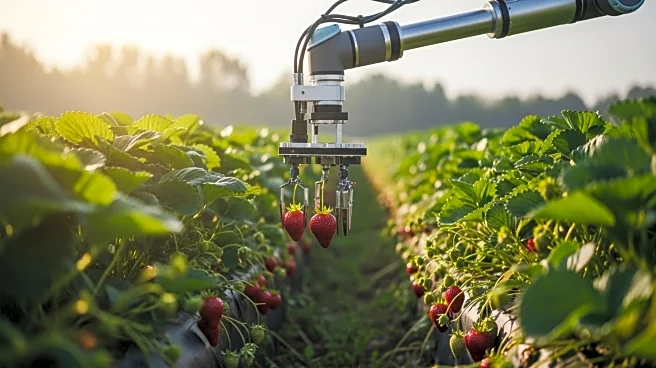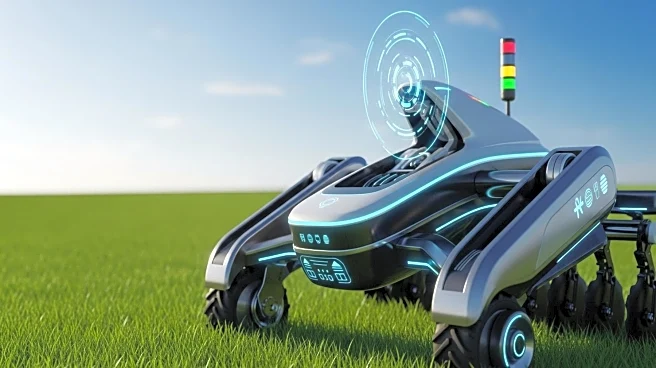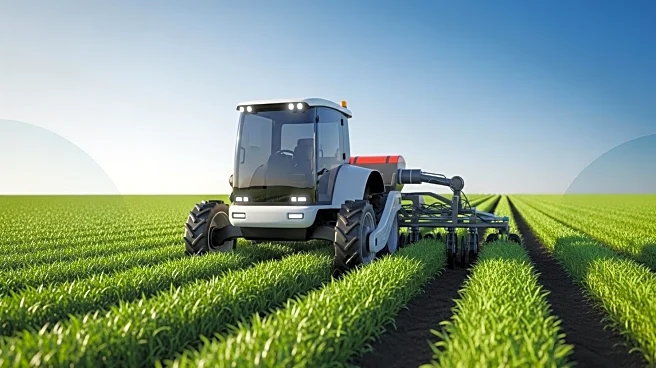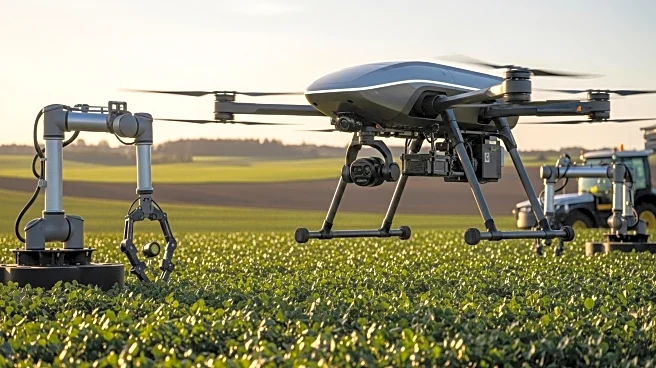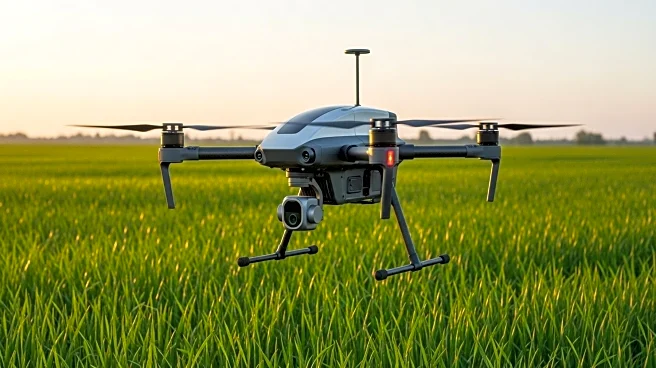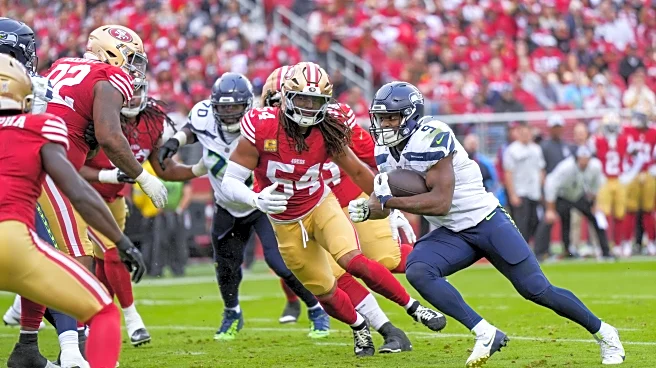What's Happening?
Washington State University researchers have developed a robotic harvester designed to pick strawberries, a task traditionally challenging due to the fruit's delicate nature and tendency to be hidden under leaves. The robot utilizes an artificial intelligence vision system, soft silicone fingers, and a fan to gently move leaves aside, improving its ability to detect and classify strawberries. The harvester demonstrated an 80% success rate in detecting strawberries and a 93% accuracy in classifying hidden berries during tests. This innovation aims to make open-field robotic harvesting more commercially viable, addressing labor shortages in the $20 billion strawberry market, which is projected to grow by 6% annually over the next decade.
Why It's Important?
The development of robotic harvesters is crucial for the strawberry industry, which faces labor shortages that increase costs and limit harvests. By automating the picking process, these robots can supplement human labor, potentially reducing reliance on manual workers and increasing efficiency. The technology could also be adapted for other crops with similar harvesting challenges, such as grapes. This advancement represents a significant step towards integrating robotics into agriculture, enhancing productivity and sustainability in the sector.
What's Next?
Further improvements in the speed and efficiency of the robotic harvester are necessary for it to be fully effective in field conditions. Researchers are exploring the potential application of the fan system in other crops where occlusion is a challenge. While robotic harvesters are unlikely to completely replace human workers, they could serve as a valuable supplement, especially during labor shortages. Continued development and testing will be essential to refine the technology and expand its use in agriculture.
